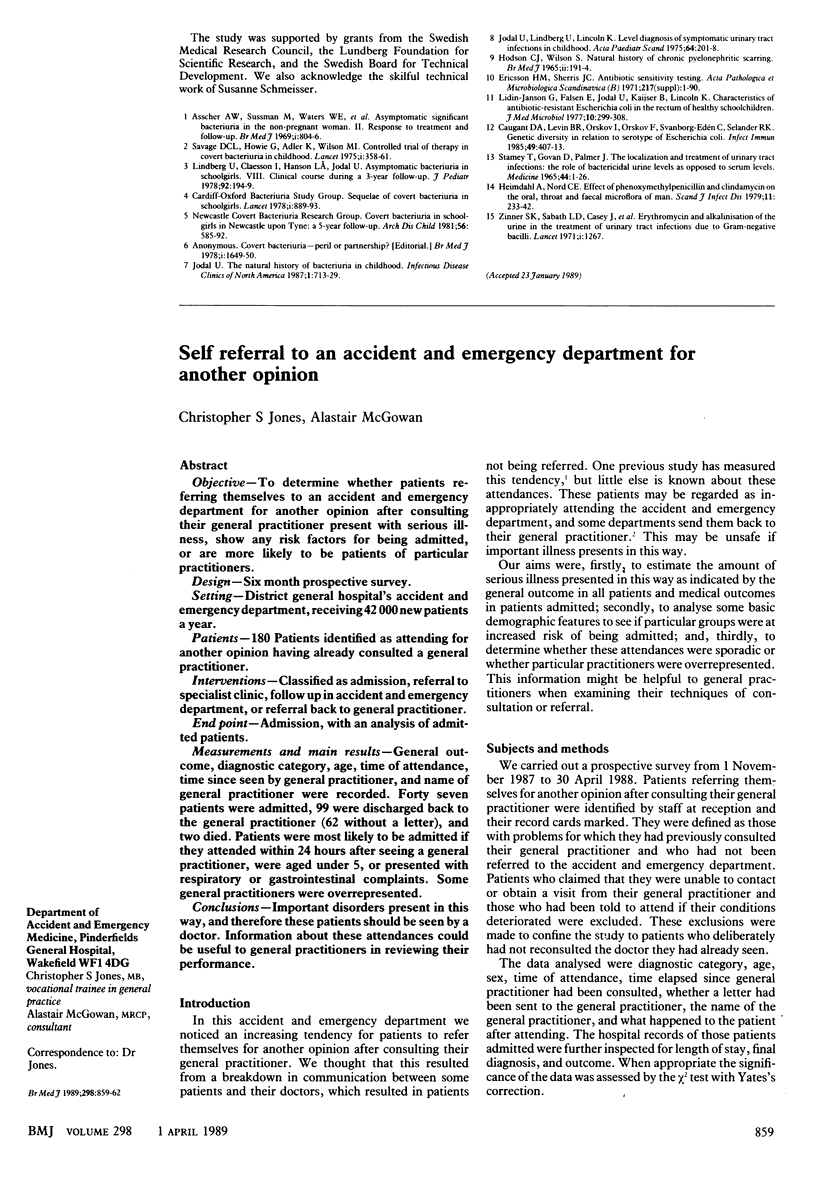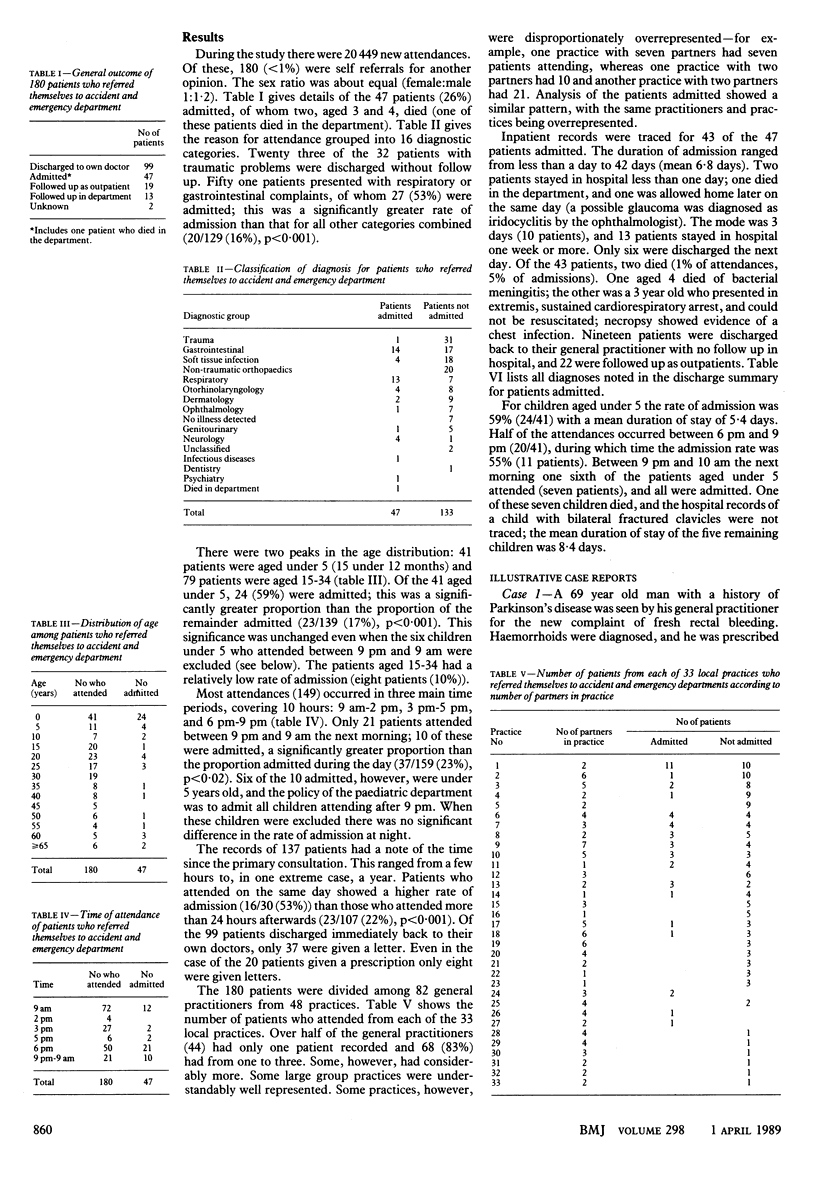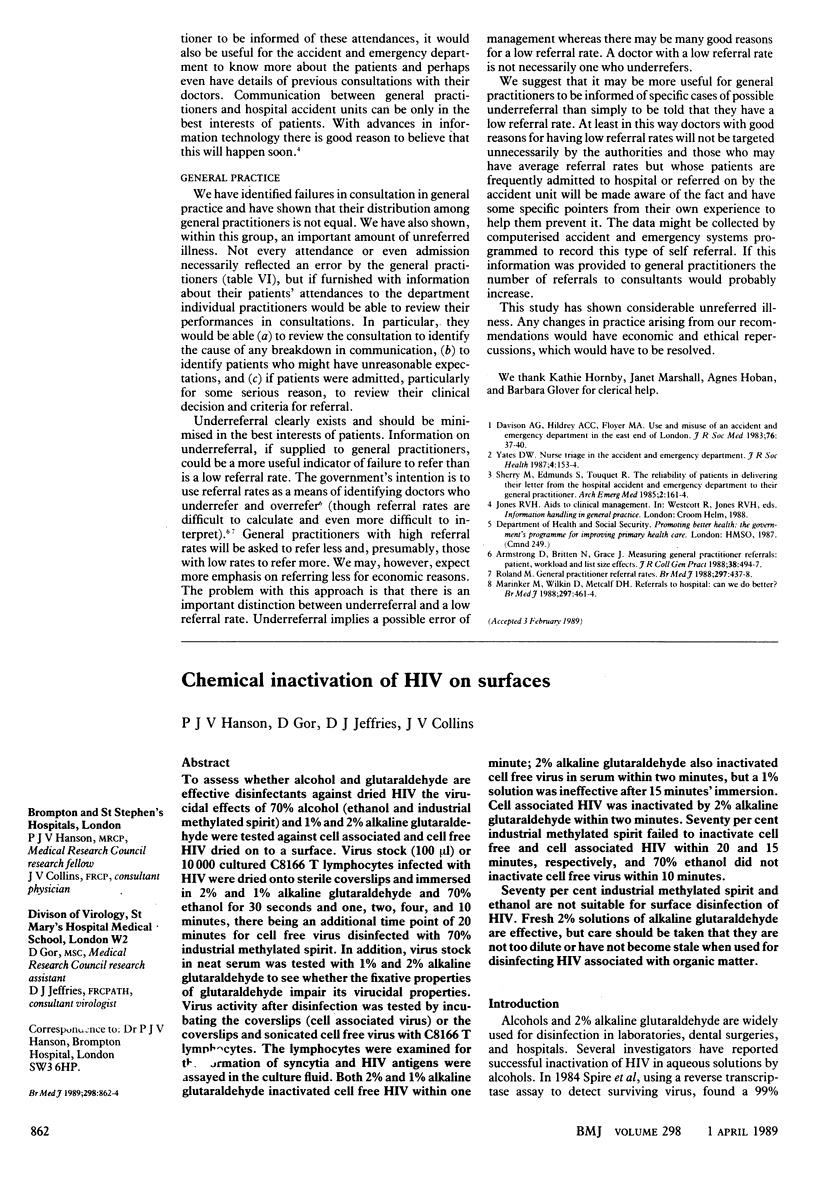Abstract
OBJECTIVE--To determine whether patients referring themselves to an accident and emergency department for another opinion after consulting their general practitioner present with serious illness, show any risk factors for being admitted, or are more likely to be patients of particular practitioners. DESIGN--Six month prospective survey. SETTING--District general hospital's accident and emergency department, receiving 42,000 new patients a year. PATIENTS--180 Patients identified as attending for another opinion having already consulted a general practitioner. INTERVENTIONS--Classified as admission, referral to specialist clinic, follow up in accident and emergency department, or referral back to general practitioner. END POINT--Admission, with an analysis of admitted patients. MEASUREMENTS AND MAIN RESULTS--General outcome, diagnostic category, age, time of attendance, time since seen by general practitioner, and name of general practitioner were recorded. Forty seven patients were admitted, 99 were discharged back to the general practitioner (62 without a letter), and two died. Patients were most likely to be admitted if they attended within 24 hours after seeing a general practitioner, were aged under 5, or presented with respiratory or gastrointestinal complaints. Some general practitioners were overrepresented. CONCLUSIONS--Important disorders present in this way, and therefore these patients should be seen by a doctor. Information about these attendances could be useful to general practitioners in reviewing their performance.
Full text
PDF



Selected References
These references are in PubMed. This may not be the complete list of references from this article.
- Armstrong D., Britten N., Grace J. Measuring general practitioner referrals: patient, workload and list size effects. J R Coll Gen Pract. 1988 Nov;38(316):494–497. [PMC free article] [PubMed] [Google Scholar]
- Davison A. G., Hildrey A. C., Floyer M. A. Use and misuse of an accident and emergency department in the East End of London. J R Soc Med. 1983 Jan;76(1):37–40. [PMC free article] [PubMed] [Google Scholar]
- Marinker M., Wilkin D., Metcalfe D. H. Referral to hospital: can we do better? BMJ. 1988 Aug 13;297(6646):461–464. doi: 10.1136/bmj.297.6646.461. [DOI] [PMC free article] [PubMed] [Google Scholar]
- Roland M. General practitioner referral rates. BMJ. 1988 Aug 13;297(6646):437–438. doi: 10.1136/bmj.297.6646.437. [DOI] [PMC free article] [PubMed] [Google Scholar]
- Sherry M., Edmunds S., Touquet R. The reliability of patients in delivering their letter from the hospital accident and emergency department to their general practitioner. Arch Emerg Med. 1985 Sep;2(3):161–164. doi: 10.1136/emj.2.3.161. [DOI] [PMC free article] [PubMed] [Google Scholar]
- Yates D. W. Nurse triage in the accident & emergency department. J R Soc Health. 1987 Aug;107(4):153–154. doi: 10.1177/146642408710700413. [DOI] [PubMed] [Google Scholar]


